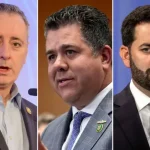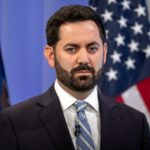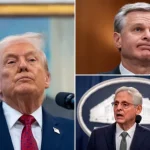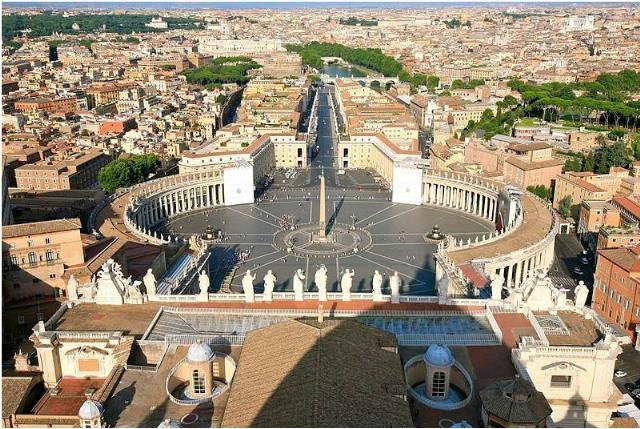
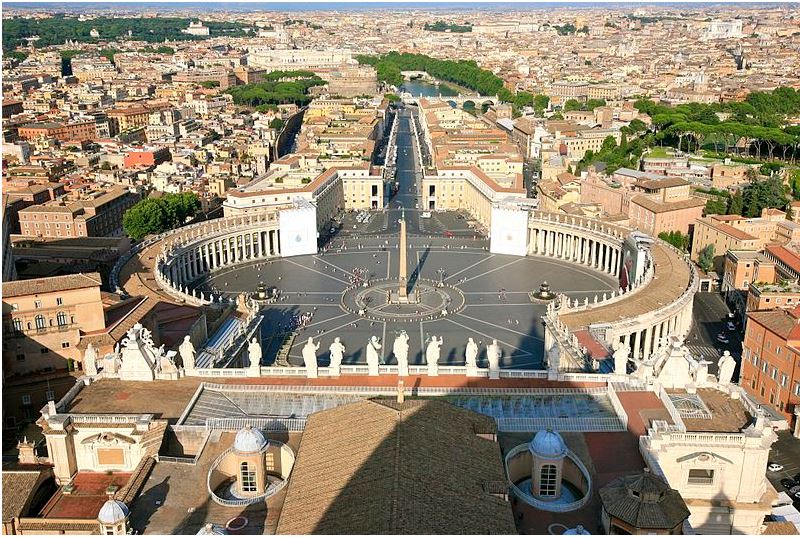
Photo Credit:Vatican
alex proimos via wikim
The Bergoglian papacy has sown doctrinal confusion and moral ambiguity among both clerics and laity.The Vatican’s Synod on Synodality, an all-inclusive gathering of four hundred progressive cardinals, bishops, laypeople, diverse religious communities, gay advocacy groups, and liberal theologians, is finally in the rear-view mirror. Its work over three years falls neatly in line with Il Papa Bergoglio’s continued broadside on the traditional liturgy and his affection for groups that harbor ill feelings against the Catholic church. The enclave railed against the age-old church hierarchy and denigrated the power of the papacy and bishops by imputing influence over policy and doctrine to the laity. Its accommodation to sins of the flesh would give ascendancy to marital nonconformity and ideological refuge to those clerics accused of rampant sex abuse.
Bergoglio was quick to ratify the Synod’s final report, foregoing his papal obligation to make a canonical case in defense of the gospel where obvious heresies — a female diaconate, priest celibacy, flattening of the church hierarchy, new sins for attacks on the environment, and blessings for same-sex couples — are left wide open for further debate. With Bergoglio’s endorsement, a demonic influence has entered the teaching authority of the church.
As a centerpiece of the Bergoglian doctrine, the report harmonizes with the catechesis of dialogue and discernment in modern Jesuitism. The Synod has laid the foundation for a new Catholic church, seeking to realign its beliefs, and adding fuel to Bergoglio’s plan to break eggs over the traditional ecclesiology of the Church and its magisterium. With two Jesuits cardinals in charge of the Synod and a tailwind from the Jesuit cardinal overseeing the Vatican’s powerful Dicastery for the Doctrine of the Faith, it should come as no surprise to those familiar with the post-conciliar tongue-wagging by consecutive superiors of the Society of Jesus to eradicate both papal authority and the Church’s traditional reliance on dogma and doctrine. It is a plot underway for more than sixty years.
Tugging on the red cassocks and heartstrings of bishops and cardinals, theological sages from the Jesuit order, with a push from Freemasonry, got their way at the Second Vatican Council in the early sixties, pressuring the Council prelates to take the wrong fork in the road ahead for the Catholic Church. Subsequent decades witnessed the alteration of the Traditional Latin Mass into an uber Protestant liturgy, replete with a rewritten missal and the watering down of the acts of reconciliation, penance, and contrition. Church interiors took on the drab severity of the architectural modernists, decorated with otherworldly artistic impressions of Christ and his apostles. Chancel rails where congregants took a knee to receive the Blessed Sacrament were uprooted. Tabernacles were put out of the reach of altar tables, now single slabs of stone separated from the high altar and adrift in the sanctuary. The congregation, to include everyone from the weekly faithful to the Catholic perennials who appear on occasions of high holy days, have been rebranded as the People of God, an honorific title drummed up in Vatican II with the effect of diminishing the Mystical Presence of God in the Church and thrown about in Bergoglio encyclicals and exhortations with the usual Jesuit chicanery to reduce scripture and tradition to earthly debate. It comports with this relaxation of all things Divine that the priest offers Mass facing the congregation rather than to God at the high altar.
The Bergoglian papacy has given Jesuits a chokehold on the Holy See and turned the Vatican into an apostolic palace of intrigue. Jesuit cardinals and bishops have assumed leadership of the Vatican dicasteries on faith, communications, and human development, in addition to steering the destructive Synod on Synodality. Guided by Bergoglio’s papal instruction, Instrumentum Laboris, the Synod plodded through a calculated agenda using esoteric Jesuit buzzwords such as discernment, dialogue, and the people’s church to masquerade the promotion of LBGTQ+ causes, transgenderism, a female diaconate, climate activism, and an end to priestly celibacy.
<img alt="Vatican" captext="alex proimos via wikim ” class=”post-image-right” src=”https://conservativenewsbriefing.com/wp-content/uploads/2024/11/bergoglio-fiddles-as-the-church-burns.jpg” width=”450″>The true intentions of the Bergoglian papacy, playing peekaboo behind a curtain of synodality and church unity, have sown doctrinal confusion and moral ambiguity among both clerics and laity. It is an irreverent approach focused on worldly social and scientific explanations that bend over backwards to excuse and condone sinful behavior. Bergoglio’s exhortations on climate change, acceptance of pagan idolatry, and open-mindedness for same-sex behaviors and blessings, are completely at odds with notions of apostolic tradition and revelation. His religious upbringing as an Argentinian Peronist is in full bloom by his waffling on issues, signaling one way and turning another, and composing long-winded treatises that are less pastoral than political. His ideological fixation on social causes is typical of Latin American liberation theology, a Jesuit hammer and sickle ideology rooted in the pursuit of power through the nefarious ambiguities of social and environmental justice.
From the outset of his papacy, Bergoglio has chosen not to shepherd the faith of American Catholics, but rather to take cheap shots, railing at their conservative and traditional bent and heavily leaning on the U.S. Conference of Catholic Bishops (USCCB) to fall in line with synodality and liturgical novelty in their governance of the church. Prelates Blase Cupich, Robert McElroy, and Joseph Tobin, all recent Bergoglio appointees to the cardinalate, have become his primary influencers in that voting body. Through these mouthpieces, Bergoglio has sown division within the conference on issues related to abortion, gay rights, and deaconesses. Should Bergoglio beat the odds for another five years, he will have the opportunity to find likeminded replacements for approximately fifty-two American cardinals, archbishops, and bishops who will be aging out into episcopal retirement. The die will then be cast for the decentralization of USCCB power and jurisdiction and elevation of lay authority over church policy and practice.
One of the few obstructions to Bergoglio’s hopes and dreams for a new Synodal Church are the Marian apparitions. Mystical appearances in La Salette, France (1848), Lourdes, France (1856), Fatima, Portugal (1917), and Akita, Japan (1973) are among those well-known to millions of Christian faithful. What links time and geography in these heavenly appearances are the straightforward and often foreboding messages for the future of the Catholic church and pleas for a repentant humanity closer to God.
In the Bergoglian era, secularism, materialism, and modernism are the new earthbound articles of faith that have little room for supernatural meddling. In 2024, Bergoglio tackled the problem of Marian apparitions, Eucharistic miracles, and church statues weeping blood and tears by unleashing his strongman guardian of the faith, Cardinal Victor Fernandez, giving him the power of judge, jury, and executioner over such matters.
Fernandez’s revised protocols for weeding through these blessed events stands as a shining example of Jesuit sophistry. Supernaturality has been removed from the Catholic lexicon. First line authority over investigations has been taken from the local diocesan bishops and kicked upstairs to Fernandez. Apparitions with messages that undermine the unity of the church are unlikely to be given credence. Had these requirements been imposed by the popes of the 19th and 20th centuries, the Vatican might not have endorsed several notable apparitions that leveled dire warnings upon the future church.
Bergoglio, through ongoing working groups and private audiences, continues to level fire at church doctrine and dogma that has kept the Catholic Church on a firm footing for more than two millennia. With the future of the church and humanity hanging in the balance, the Virgin Mary herself has repeatedly intervened with prescient messages seeking to reverse the fateful and unrepentant path upon which humanity now treads. With the future of the New Synodal Church at risk, Bergoglio had no choice but to sideline and muzzle Her.
Image: Alex Proimos via Wikipedia


